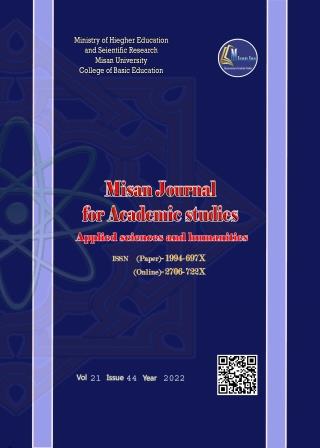The text is a method of Quranic dialogue in displaying intellectual deviation
Abstract
The Qur’anic dialogue is distinguished by its invitation to all, that is: it is not satisfied with inviting the believers only to it, but rather invites all people to that because of its goodness and righteousness. Moreover, this dialogue does not mean fabrication and sophistry, but rather it is a dialogue based on the conditions of dialogue, its politeness and its horizons. This is confirmed by the Qur’an; The Holy Qur’an has taken dialogue as a way for all of its issues, because it is based on miraculous characteristics and methods that enable it to defame others, and it is also the way to clarify the differences that appear on the tongues of its opponents. After the failure with the interlocutors and their insistence on falsehood with the brightness of the truth, the dialogue is an honest image to reveal the amount and size of the conflict that took place between the opposing parties. The Qur’an also informs us of the reality of the opponent through this dialogue, as he wants to bring the interlocutor and force him to insults, insults and wrong attitudes. However, the Qur’an teaches us how the Muslim does not get dragged behind that, because he possesses calmness and complete mind..., the value of a Muslim appears in how he leads Dialogue in an effective manner commensurate with the atmosphere of dialogue, the Muslim is his concern and starting point in the dialogue is the true message.
Downloads
Copyright (c) 2022 Misan Journal of Academic Studies

This work is licensed under a Creative Commons Attribution-NonCommercial-NoDerivatives 4.0 International License.
The copyright is also the copyright of the magazine only.
All articles published in our magazine are subject to license terms
Creative Commons Attribution(CC BY-NC-ND 4.0) This license permits the content to be reproduced, redistributed and reused in whole or in part for any purpose free of charge, without any permission from the author(s), researcher or student.
Works submitted to Maysan Journal of Academic Studies for publication in the journal (CC BY-NC-ND 4.0) license terms. Where available content can be shared, distributed and replicated provided there is no commercial profit and appropriate credit must be given to the original source through sources or citations. It is mandatory to review any material used from other sources including shapes, tables, and images for re-use under the terms of the Creative Commons License (CC BY-NC-ND 4.0).Provided that there is no modification to the original content



